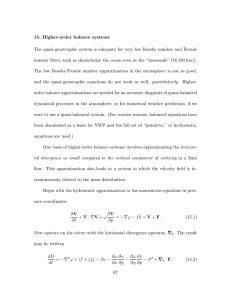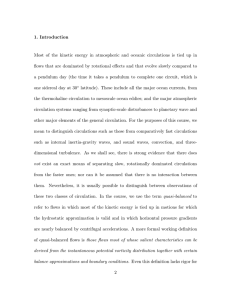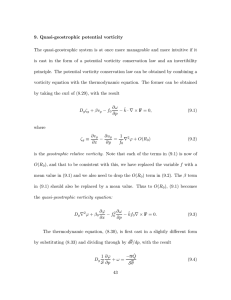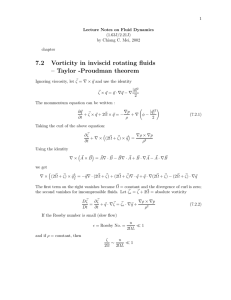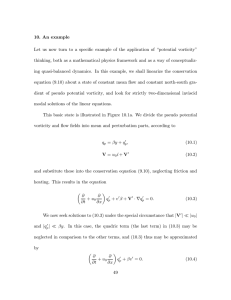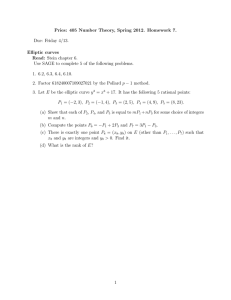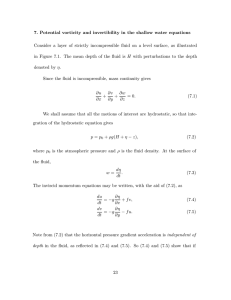q θ σ single
advertisement
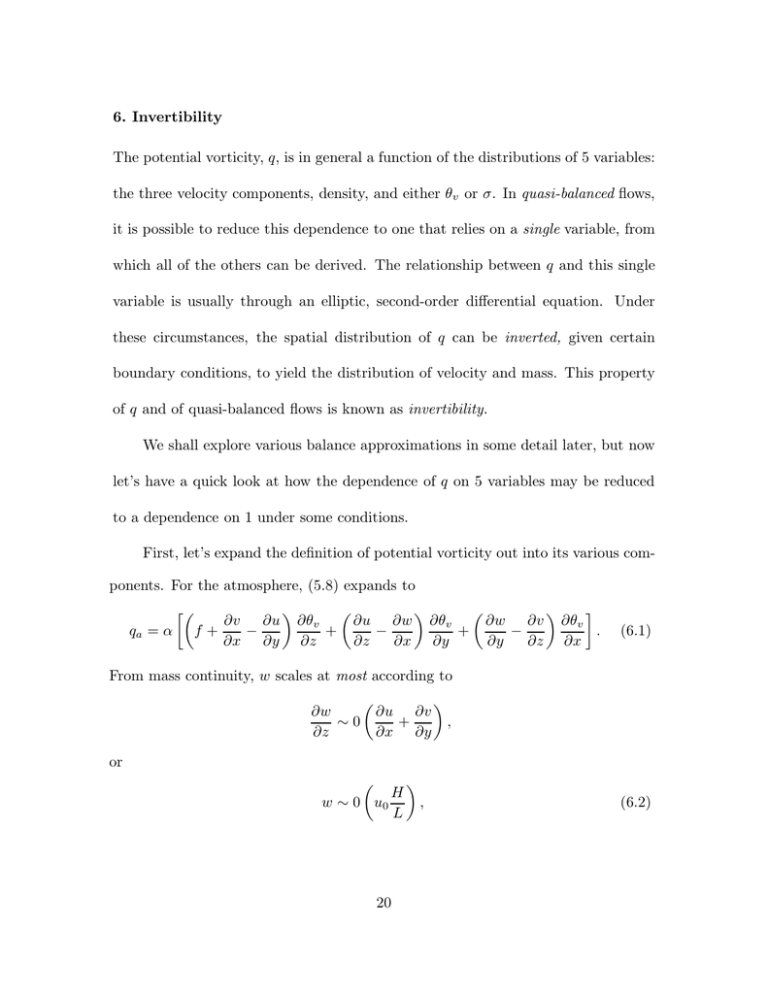
6. Invertibility The potential vorticity, q, is in general a function of the distributions of 5 variables: the three velocity components, density, and either θv or σ. In quasi-balanced flows, it is possible to reduce this dependence to one that relies on a single variable, from which all of the others can be derived. The relationship between q and this single variable is usually through an elliptic, second-order differential equation. Under these circumstances, the spatial distribution of q can be inverted, given certain boundary conditions, to yield the distribution of velocity and mass. This property of q and of quasi-balanced flows is known as invertibility. We shall explore various balance approximations in some detail later, but now let’s have a quick look at how the dependence of q on 5 variables may be reduced to a dependence on 1 under some conditions. First, let’s expand the definition of potential vorticity out into its various com­ ponents. For the atmosphere, (5.8) expands to qa = α ∂u ∂v − f+ ∂x ∂y ∂θv + ∂z ∂u ∂w − ∂z ∂x ∂θv + ∂y ∂w ∂v − ∂y ∂z ∂θv . ∂x (6.1) From mass continuity, w scales at most according to ∂w ∼0 ∂z ∂u ∂v + ∂x ∂y , or H w ∼ 0 u0 , L 20 (6.2) where H and L are typical vertical and horizontal scales over which the flow varies, and u0 is a typical horizontal velocity scale. (Note that in most geophysical flows, the flow is quasi-nondivergent, so actually w 0 u0 H L .) Thus, in terms that appear in (6.1), like ∂u ∂w − , ∂z ∂x the order of the term is u0 H H2 1− 2 . L Since, for virtually all flows we will be interested in, H/L 1, the contribution of w to the potential vorticity is utterly negligible. So (6.1) may be accurately approximated by qa α ∂u ∂v − f+ ∂x ∂y ∂θv ∂u ∂θv ∂v ∂θv + − . ∂z ∂z ∂y ∂z ∂x (6.3) Now if we employ the hydrostatic approximation, (2.2), it follows that α ∂A ∂A −g , ∂z ∂p for any quantity A. Using this in (6.3) gives ∂v ∂u ∂θv ∂u ∂θv ∂v ∂θv qa −g f + , − + − ∂x ∂y ∂p ∂p ∂y ∂p ∂x (6.4) This can be re-expressed in θv coordinates as qa −g ∂p ∂θv −1 ∂v ∂u f+ . − ∂x θv ∂y θv 21 (6.5) Now suppose that the flow is, to a good approximation, hydrostatic and geo­ stropheICC. In θv coordinates, the hydrostatic and geostrophic relations are ex­ pressed in terms of the Montgomery streamfunction: M ≡ cpd Tv + gz. (6.6) These relations are: Hydrostatic: Geostrophic: κ ∂M , ∂θv (6.7) ∂M f ug = − , ∂y θv ∂M f vg = . ∂x θv (6.8) cpd p p0 = Substituting these into (6.5) gives κ1 −1 2 −1 1 ∂ M ∂M ∇2 M . qa −gp−1 0 cpd κ f + f ∂θv ∂θv2 1 κ (6.9) Then qa is a function of M alone, and this function is a nonlinear and usually elliptic one. (It is always elliptic when 1 2 f∇ M 22 + f has the same sign as qa , and Figure 7.1 ∂M/∂θv > 0.) When it is elliptic, (6.9) can be inverted to find M, and therefore ug , vg , and p, given the distribution of qa and certain boundary conditions. We will be developing somewhat simpler invertibility relationships for potential vorticity. The essential elements in all of these are the definition of potential vortic­ ity, coupled with balance approximations that link the instantaneous distribution of velocity to that of mass. 23 MIT OpenCourseWare http://ocw.mit.edu 12.803 Quasi-Balanced Circulations in Oceans and Atmospheres Fall 2009 For information about citing these materials or our Terms of Use, visit: http://ocw.mit.edu/terms.
